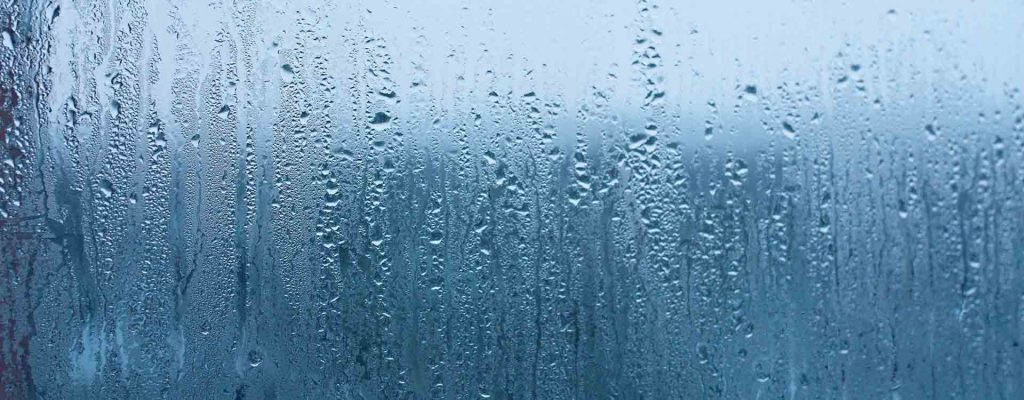How to Stop Condensation?

There are various new techniques which can prove to be incredibly useful in the prevention of condensation within your property. Below you will find a list of 9 proven methods teaching you how to stop condensation and black mould issues in your home.
Tired of reading? Listen to this article!
What Causes Condensation?
Throughout our everyday lives, people will create moisture. This is created through daily activities such as bathing, cooking, drying clothes on radiators, showering and breathing. All these activities increase the relative humidity of the property which is the percentage of moisture in the air of your property.
Although these activities don’t necessarily present an issue when the moisture is created however once the property cools down at night, then any high moisture which is still present in the atmosphere can condense on cold surfaces such as windows, mirrors and uninsulated external walls, resulting in condensation.
Therefore, this is the why it is important to maintain a regular temperature and ventilate your property effectively.
How To Stop Condensation? Proven Methods Listed Below:
1. Cooking Precautions
Simple precautions like keeping the lid on saucepans and not letting kettles continue to boil all help to reduce the amount of moisture in the air in your property. Turning on an extractor fan if you have one will also assist in the removal of this moisture. It is worth noting that an extractor fan should be left on for around ten minutes after cooking to allow for the removal of any excess moisture still within the atmosphere.
2. Open Windows
Improving the air flow within your property will assist in removing moisture laden air and therefore reduce the likelihood of condensation occurring. Most replacement windows now come with perma vents or “trickle Vents” and these should remain open at times of high moisture. Even a small amount of air entering your property freshens the air and forces movement of the air within your rooms.
3. Furniture Gaps
Keeping a small gap between furniture and walls can improve air flow. This can prevent stagnant moist air forming behind units and other items, resulting in potential condensation and mould over a period of time.
4. Property Airways Kept Clean
Air bricks are built into the property for a reason and should be kept clear to allow a flow of air to pass through. Common causes of obstruction are decking built against these bricks and preventing air flow or shrubs being allowed to grow over the vents. These vents may be covered if the external ground level is raised to create a patio.
5. Changing Bathroom Behaviours
Bathrooms are arguably the worst room in any property for increased levels of moisture being present. In order to reduce condensation forming, extractor fans should be turned on at times of bathing or showering and windows opened after taking a bath or a shower. Keeping the bathroom door closed will also assist in preventing moisture laden air traveling to other areas of the property.
6. Drying Clothes Outside
Cloths should be dried outside whenever possible to prevent increased levels of moisture in your property. If there are no alternatives to drying clothing indoors, then this should be done in a room with the door closed and a good flow of air. Tumble dryers should be self-venting or be vented to the outside of the property. Many people use damp dehumidifiers in rooms where they dry their clothes as a dehumidifier can lower relative humidity temporarily.
7. Temperature Management
Effective heating is just as important in condensation control as ventilation, particularly in the winter months. By reducing the temperature by a couple of degrees but leaving the heating on will regulate the temperature in your home and will allow your boiler to operate more efficiently, therefore not only will this assist in the prevention of condensation it will also lower your heating costs as the boiler is working more efficiently.
8. Covering Fish Tanks
A simple cover over a fish tank will greatly reduce the amount of water vapour being passed into the atmosphere.
9. Double Glazing and Insulation
Installing new double-glazed windows and increasing the amount of insulation in your loft can greatly reduce the amount of heat loss within your property and therefore reduce the risk of condensation.
What to Do Next To Stop Condensation?
If you are unsure of the necessary steps which you need to take in order to resolve condensation issues within your property, you should seek professional assistance. Richardson & Starling’s qualified and certified surveyors will be able to accurately identify the source of the problem. After completing a survey of the affected areas within your property, we will be able to advise you of any remedial treatment required or what you can do to reduce the likelihood of condensation in your property.
Contact your local branch for full details and our team will be happy to help.Not sure how to stop condensation? Contact your local branch for advice or a property survey.
